Kniphofia northiae
Kniphofia northiae Baker
Family: Asphodelaceae
Common names: broad-leaved poker, Marianne North’s poker, giant red-hot poker, octopus torch (Eng.); icacane, umathunga (isiZulu.); leloele (Sesotho)
Introduction
Kniphofia northiae, is an award-winning, gigantic red-hot poker, its striking architectural leaves and hardiness making it significant in gardening.
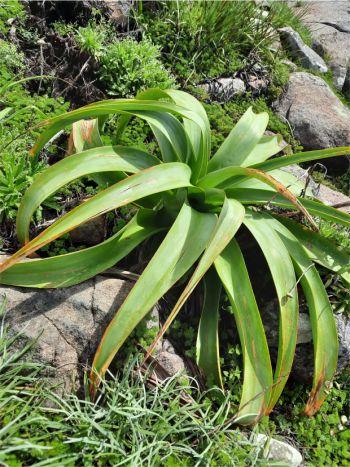
Fig. 1: The magnificent leaf rosette of Kniphofia northiae.
Description
Description
A robust, perennial, growing up to 1.7 m tall. Leaves are evergreen, stiff in texture and curving backwards, giving the plant an aloe-like form. At flowering time, the oval flowerheads are borne on the robust central stem, with numerous tubular florets that are closely packed together at the tip. The flowers are green in bud, open to a muted crimson and fade from the base to yellow and brown, giving the typical image of a red-hot poker. Flowering has been recorded in summer and spring, from December to February and September to October.
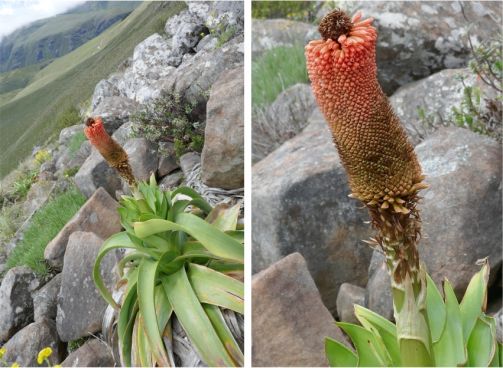
Fig. 2: Kniphofia northiae in flower.
The huge, shallowly channeled (sunk below the surface, resulting in a rounded channel), arching leaves that lack a pronounced keel distinguish this species from all others.
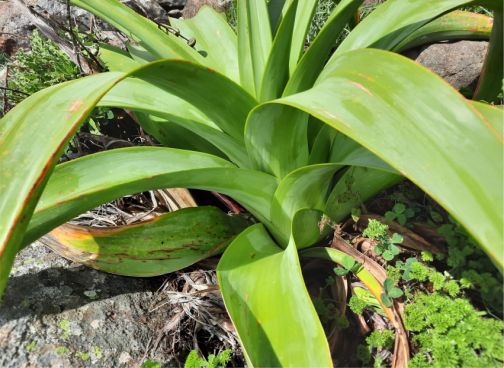
Fig. 3: A close view of the aloe-like leaves of Kniphofia northiae.
Conservation Status
Status
The Red List of South African Plants has automatically assessed this species as Least Concern (LC). Species with an automatic status of LC have passed four screening steps in order to highlight them as prospective species of conservation concern; if the species does not match any of the criteria, its risk of extinction is consequently reduced, and it is thus automatically classified as Least Concern.
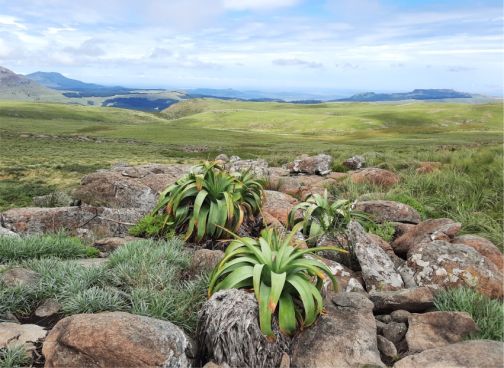
Fig. 4: A group Kniphofia northiae at Elandsberg near Hogsback, Eastern Cape.
Distribution and habitat
Distribution description
Christopher Whitehouse believes that “understanding how plants grow in their natural habitats helps gardeners grow the same plants successfully in their own climate”. He spent three weeks of the first two months of 2012 in South Africa searching for and observing Kniphofia species in their natural habitat.
Kniphofia northiae is most commonly found in steep areas of the Eastern Cape, KwaZulu-Natal and eastern Lesotho, predominantly in grassland vegetation, but there have been reports of it on sub-escarpment savanna as well. These are some of the country’s highest-elevation locations, with an altitudinal range of 1 500 m to 2 800 m and potentially steep terrain. The rainfall is generally very high, precipitation may occur at any time of the year, and orographic mists (mists connected with the presence of mountains) supplement rainfall. At the highest elevations, snow and frost are common and temperatures are usually cool to cold. K. northiae prefers moist habitats along mountain ranges, where it forms colonies or grows alone on grassy slopes facing south or east. Plants grow singly and are associated with rocky slopes in locations where rainfall is low, such as sub-escarpment grassland. As a result, places with a lot of rain, snow in the winter, or lower temperatures are ideal for the growth of this plant.
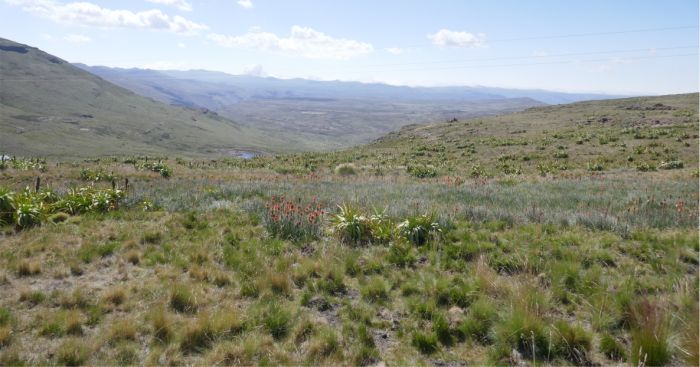
Fig. 5: A colony of Kniphofia northiae near Tiffendel, Eastern Cape, growing with Kniphofia caulescens.
Derivation of name and historical aspects
History
Kniphofia is a member of the Asphodelaceae family, which includes 17 genera and over 750 species. Kniphofia has over 70 species in Africa, with 47 of them occurring in eastern South Africa
The genus Kniphofia was named in honour of Johann Hieronymus Kniphof by botanist Conrad Moench (1745–1805). Johann Hieronymus Kniphof (1704-1763) was a German physician and botanist who, while working as a Professor of medicine at Erfurt University in Germany, built a large and outstanding herbarium, about which he eventually published a book titled Botanica in originali. This herbarium was well-known for its use of a printing technique known as ‘nature printing,’ which Johann had developed in order to imprint details of diverse botanical specimens.
This species is named in honour of Marianne North (1830-1890), a traveler and botanical artist. Kniphofia northiae was described as a new species in the London Journal of Botany in 1889, by John Gilbert Baker (1834-1920). The journal mentions that the type specimen, from which this species description was made, came from the mountains north of Grahamstown. However, there are no natural occurrences of the species near Grahamstown; the closest records are from Hogsback, and Mrs. North recalls visiting the Grahamstown Botanical Garden, which may be where the specimen that she painted was from; in cultivation rather than in the wild. During her tour to South Africa (1882-1883), she created 104 paintings, including K. northiae, which are on display in the Marianne North Gallery at Kew Gardens.

Fig. 6: The cone-like developing inflorescence Kniphofia northiae.
Ecology
Ecology
In general, the floral characteristics of the genus Kniphofia are similar to those of the genus Aloe, with a tubular perianth that serves as a great reservoir for plentiful nectar, complying with the bird pollination pattern. Furthermore, the drying perianth tube acts as a nectar guide, transporting nectar from the ovary to the apex, where it gathers in a glittering droplet. Species with very small flowers are suggestive of insect pollination; however, even those that follow the bird pollination pattern vary in flower tube size, making it difficult to identify a pollinator based solely on flower traits; thus, more research is required for each individual species.
Kniphofia caulescens was found to be pollinated by opportunistic nectar-feeding birds in a study done, in 2009, notably Drakensberg Siskins and Yellow Canaries. Both species have been observed co-occurring in wetlands in the Eastern Cape Drakensberg; this could indicate a common interest in both species, but it is not certain that they share the same pollinator because their flower tubes are not the same size. Furthermore, Kniphofia appears to contain species pollinated by insects, specialized nectar-feeding birds (sunbirds), and opportunistic nectar-feeding birds (M. Brown unpublished data), indicating that more research is needed.
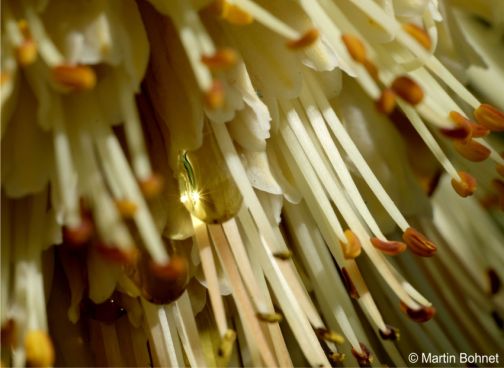
Fig. 7: Kniphofia northiae flowers are rich in nectar.
Uses
Use
Because of its beautiful flowers, the genus is well noted for its ornamental value, and it is utilized in horticulture and is planted in both home and botanical gardens. Kniphofia northiae’s magnificent evergreen and recurved leaves, along with a torch-like inflorescence, win it a desired horticultural effect, and it’s no surprise that it was granted the renowned Award of Garden Merit by the Royal Horticultural Society in 2006. As a result, it is a highly recommended ornamental and horticultural species.
Kniphofia species have traditionally been used to cure a number of diseases, according to a recent study on ethnomedicinal uses, and K. northiae stems have been reported to have medicinal characteristics that can treat ailments such as period cramps and hypermenorrhea (prolonged period cycle).
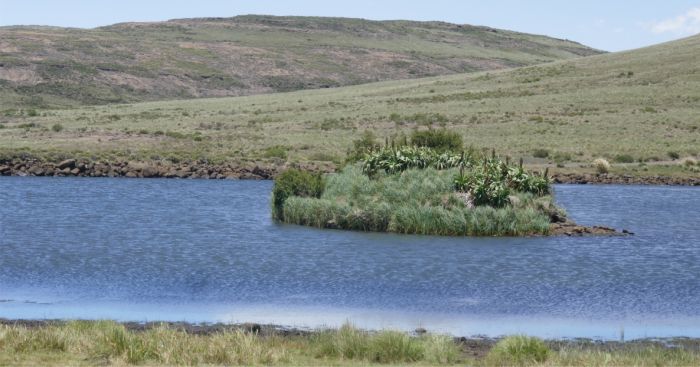
Fig. 8: Kniphofia northiae growing on an island in a river.
Growing Kniphofia northiae
Grow
Kniphofias in general are recognized as architectural marvels, easy to cultivate, and drought-tolerant plants. Their beauty is not only evident in their showy flowers, but also in their remarkable evergreen, Aloe-like leaves, which provide something to look at during the non-flowering months.
Kniphofias are rhizomatous plants that can be reproduced through division, generating clumps that can then be divided to enlarge the population. Propagation from seed has also proven successful; however, it has been discovered that the low number of sexually reproducing plants may have an effect on the number of seedlings produced from seeds, which can have a negative impact on the plant’s long-term survival.
In an article published in Veld and Flora in 1985, J.P. Roux describes how readily Kniphofia northiae was cultivated from seed in the Drakensberg National Botanic Garden: “The seed was planted in August in a tray with a 3:1:1 ratio of loam, sand and compost and was covered in clean river sand. Germination took place 30 days later. The seedlings developed fast and were first established in 60 mm pots after which they were repotted into 120 mm pots. The first plants were established in the garden as year-old seedlings. Once established the plants developed at considerable rate.” They were planted on a well-drained, north-east facing slope to prevent crown rot, and the first inflorescence appeared two years after germination. Thus, depending on how quickly one wants to show off these wonderful kniphofias, both procedures are simple, but the division approach is advised for the simplest and quickest results.
Kniphofia northiae grows best in moist but well-drained soil; both loam and sand soil are recommended mediums since they allow excess water to drain away, as poor drainage can be detrimental. The soils must be acidic and neutral in pH, and they must receive full or partial shade. Soggy circumstances or standing water is not ideal for any kniphofia species, but thorough watering is essential during the growing season to ensure their survival and flowering success. This species is evergreen and won’t die back during winter, it is easy to cultivate and is very frost hardy, surviving temperatures as low as -10°C.
In the spring, plant rhizomes (when employing the vegetative propagation method) or sow seeds. This plant is frost and drought-tolerant. After 4 to 5 years, divide the clumps; in colder areas, divide the plants in the spring; in warmer ones, divide them after they flower. The 4-5-year span is a precautionary measure to avoid disrupting the floral cycle.
Kniphofias are well-known for their ability to attract birds, bees, and butterflies, and K. northiae in particular is well-suited to architectural, coastal, and gravel and rock garden themes.
Some valuable kniphofia growth tips and tactics from the Easy-to-grow-bulbs website:
Improve drainage and promote a healthy start by amending the soil with finely ground bark, decomposed manure, or compost.
Plant Kniphofia in the ground rather than containers since mature plants develop into enormous clusters that can be 0.5-1 m across.
When dividing a clump make sure that the rhizomes you cut off have roots attached, making it easier to tell which end should face upwards.
Enjoy the stunning flowers, snipping a couple for dramatic arrangements, as doing so will not harm your plants and will actually stimulate more blossoms to grow.
References
- Beard, M. 2007. ‘She travels alone and unattended’: the visit to the Eastern Cape of the botanical artist, Marianne North. De Arte 42(76):33-48.
- Brown, M., Downs, C.T., & Johnson, S.D. 2009. Pollination of the red hot poker Kniphofia caulescens by short-billed opportunistic avian nectarivores. South African Journal of Botany 75: 707–712.
- Codd, L.E. 1968. The South African species of Kniphofia. Bothalia 9: 363–513.
- Dear Plants, Giant red-hot poker (Kniphofia northiae). https://www.dearplants.com/giant-red-hot-poker-kniphofia-northiae/. Accessed on 01/10/2023.
- Easy to grow bulbs, Kniphofia/Red Hot Poker Lily Planting Guide. https://www.easytogrowbulbs.com/pages/kniphofia-planting-guide. Accessed on 31/09/2023.
- Haller, E. 2008. The Botanical Works of Marianne North. In Mcnees, E. & Veglahn, S. (Eds), Woolf Editing / Editing Woolf: selected papers from the Eighteenth Annual Conference on Virginia Woolf (pp 174-181). University of Denver, Denver Colorado.
- Moteetee A, & Kose, L.S. 2016. Medicinal plants used in Lesotho for treatment of reproductive and post-reproductive problems. Journal of Ethnopharmacology 194: 827–849.
- Nigussie, G., Tegegn, M., Abeje, D. & Melak, H. 2023. A comprehensive review of the ethnomedicine, phytochemistry, pharmacological activities of the genus Kniphofia. Pharmaceutical Biology 60(1):1177-1189.
- Pooley, E. 2003. Mountain flowers, a field guide to the flora of the Drakensberg and Lesotho. Natal Flora Publications Trust, Durban.
- Raimondo, D., Von Staden, L., Foden, W., Victor, J.E., Helme, N.A., Turner, R.C., Kamundi, D.A. & Manyama, P.A. (eds) 2009. Red list of South African plants. Strelitzia 25. South African National Biodiversity Institute, Pretoria.
- Roux, J.P. 1985. Kniphofia northiae, a species rarely cultivated. Veld & Flora 71:42.
- Stern, M. 2002. Kniphofia Moench (Asphodelaceae). PlantZAfrica. Online. http://pza.sanbi.org/kniphofia-species.
- Whitehouse, C. 2013. Kniphofia in South Africa: Tracking down red hot pokers revealed to Christopher Whitehouse much about the conditions they might prefer in gardens. The Plantsman 12:28-33.
Credits
Vathiswa Zikishe
CREW Programme: Threatened Species Unit: Grahamstown/Makhanda
October 2023
Acknowledgements: the author thanks Martin Bohnet for allowing the use of his image of a nectar drop among Kniphofia northiae flowers.
Plant Attributes:
Plant Type: Bulb
SA Distribution: Eastern Cape, KwaZulu-Natal
Soil type: Sandy, Loam
Flowering season: Spring, Early Summer
PH: Acid, Neutral
Flower colour: Brown, Yellow, Orange
Aspect: Full Sun
Gardening skill: Easy
Special Features:
Horticultural zones








Rate this article
Article well written and informative
Rate this plant
Is this an interesting plant?
Login to add your Comment
Back to topNot registered yet? Click here to register.